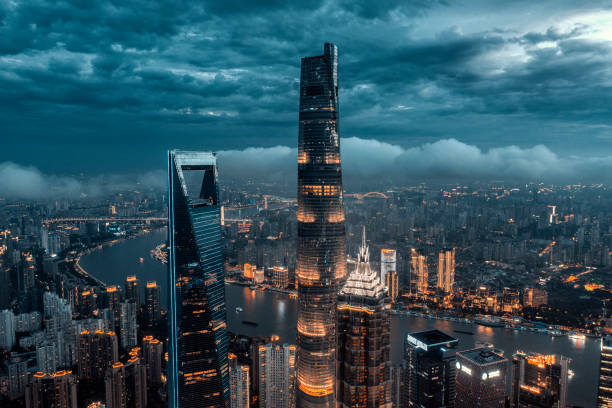【中新网评山寨“霍金”:网红模仿秀何时走出“审丑”迷雾?】
在互联网时代的大背景下,各类网红凭借独特的个人魅力和创新的表达方式,成功吸引了一大批粉丝,成为社交媒体上不可或缺的风景线。然而,在追求流量和热度的过程中,一种现象悄然兴起,那就是对名人、明星的“模仿秀”。这种现象在一定程度上满足了大众对于明星近距离接触的需求,但也引发了广泛的讨论和反思,尤其是在近期出现的“山寨霍金”事件中,更是将这一话题推向了风口浪尖。
从“这英”输出经典语录,到“或斤”抡起轮椅跳舞,从“中S”和“汪大菲”魔性同框,到“小颂文”直播连线“小张译”,这些模仿秀在社交媒体上迅速走红,吸引着无数关注。尽管模仿者们力求与原版明星神形兼备,但事实上,这种现象背后所反映的,更多的是对审美的偏差和对个性的忽视。当模仿成为追逐的焦点,原汁原味的创意和独立思考似乎被淡化,甚至被边缘化。
对于这一现象,公众的反应不一。有人认为,这种模仿是一种文化现象,反映了社会对于明星崇拜的心理,同时也为普通人提供了一种娱乐和释放压力的途径。然而,也有观点指出,这种模仿行为在某种程度上已经触及了道德和法律的底线,特别是当模仿者们利用模仿明星的形象进行商业炒作,甚至冒充知名人士进行非法活动时,其危害性不容忽视。
面对“山寨霍金”等事件,如何引导网红行业健康发展,如何在保证娱乐性的同时,维护社会的道德底线和法律秩序,成为了一个亟待解决的问题。社会各界,尤其是监管部门,应当加强对于网红行为的规范和指导,引导网红们树立正确的价值观和职业操守,同时,公众也应培养更加成熟和理性的审美观,对于模仿秀保持一定的批判性和独立思考能力,共同推动网络文化的健康发展,避免陷入“审丑”迷雾。
总之,网红模仿秀作为一种文化现象,既反映了社会的多元化需求,也暴露了当前文化生态中的某些问题。如何在追求流量和热度的同时,保持文化创新和价值导向,是值得整个社会深思和共同努力的方向。
英语如下:
News Title: “Celebrity Impersonation Craze: The Path to the Morbid Beauty Fog?”
Keywords: celebrity impersonation, internet era, morbid beauty fog
News Content: [China News Evaluation: The “Stephen Hawking” Copycat: When will the “Morbid Beauty” Fog of the Impersonation Show Clear Up?]
In the backdrop of the internet age, various influencers have succeeded in attracting a large following with their unique charisma and innovative expression methods, becoming an indispensable landscape on social media platforms. However, in the pursuit of popularity and热度, a phenomenon has quietly emerged – celebrity impersonation shows. This phenomenon, to a certain extent, satisfies the public’s demand for close encounters with celebrities, but it has sparked widespread discussion and reflection. This was especially evident in the recent “fake Stephen Hawking” incident, which pushed this topic to the forefront of public attention.
From “This Ying” delivering classic quotes, to “E5” dancing with a wheelchair, from “Zhong S” and “Wang Da Fei” in a magical duo, to “Xiao Songwen” livestreaming a connection with “Xiao Zhangyi”, these impersonation shows quickly gained popularity on social media, attracting countless viewers. Although the imitators strive to match the original celebrities in both appearance and mannerisms, the underlying message reflects a deviation in aesthetics and a disregard for individuality. When impersonation becomes the focal point of pursuit, original creativity and independent thinking seem to be overshadowed and even marginalized.
Public reactions to this phenomenon are varied. Some believe that this impersonation is a cultural phenomenon that reflects the society’s celebrity worship mentality, as well as providing an avenue for ordinary people to entertain themselves and relieve stress. However, there are also views that argue that this impersonation behavior, to a certain extent, has crossed the boundaries of morality and law, particularly when imitators use the impersonated celebrities’ images for commercial exploitation or engage in illegal activities under their guise.
Facing incidents like the “fake Stephen Hawking”, how to guide the healthy development of the influencer industry, and how to maintain moral standards and legal order while ensuring entertainment, has become a pressing issue that needs to be addressed. Society, particularly regulatory bodies, should strengthen their oversight and guidance on influencer behavior, encouraging influencers to uphold correct values and professional ethics. Meanwhile, the public should also cultivate a more mature and rational aesthetic perspective, maintaining a critical and independent mindset towards impersonation shows, and working together to promote the healthy development of online culture, avoiding the “morbid beauty” fog.
In summary, the impersonation craze among influencers is both a reflection of the diverse societal demands and an exposure of certain issues within the cultural ecosystem. How to pursue popularity and热度 while maintaining cultural innovation and value orientation is a direction that deserves deep consideration and collective effort from the entire society.
【来源】http://www.chinanews.com/sh/2024/07-10/10249055.shtml
Views: 2
